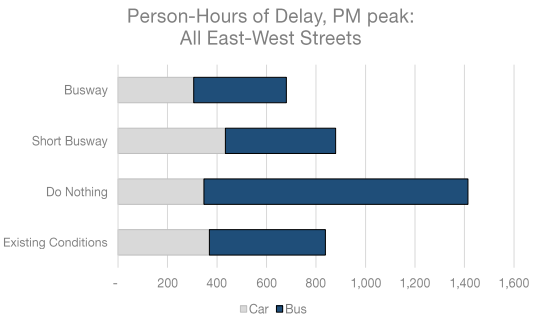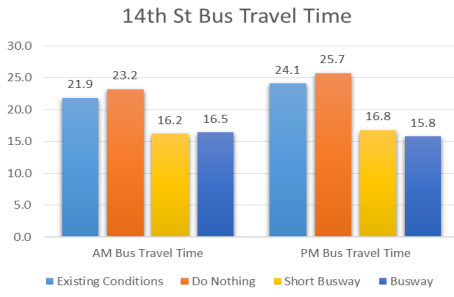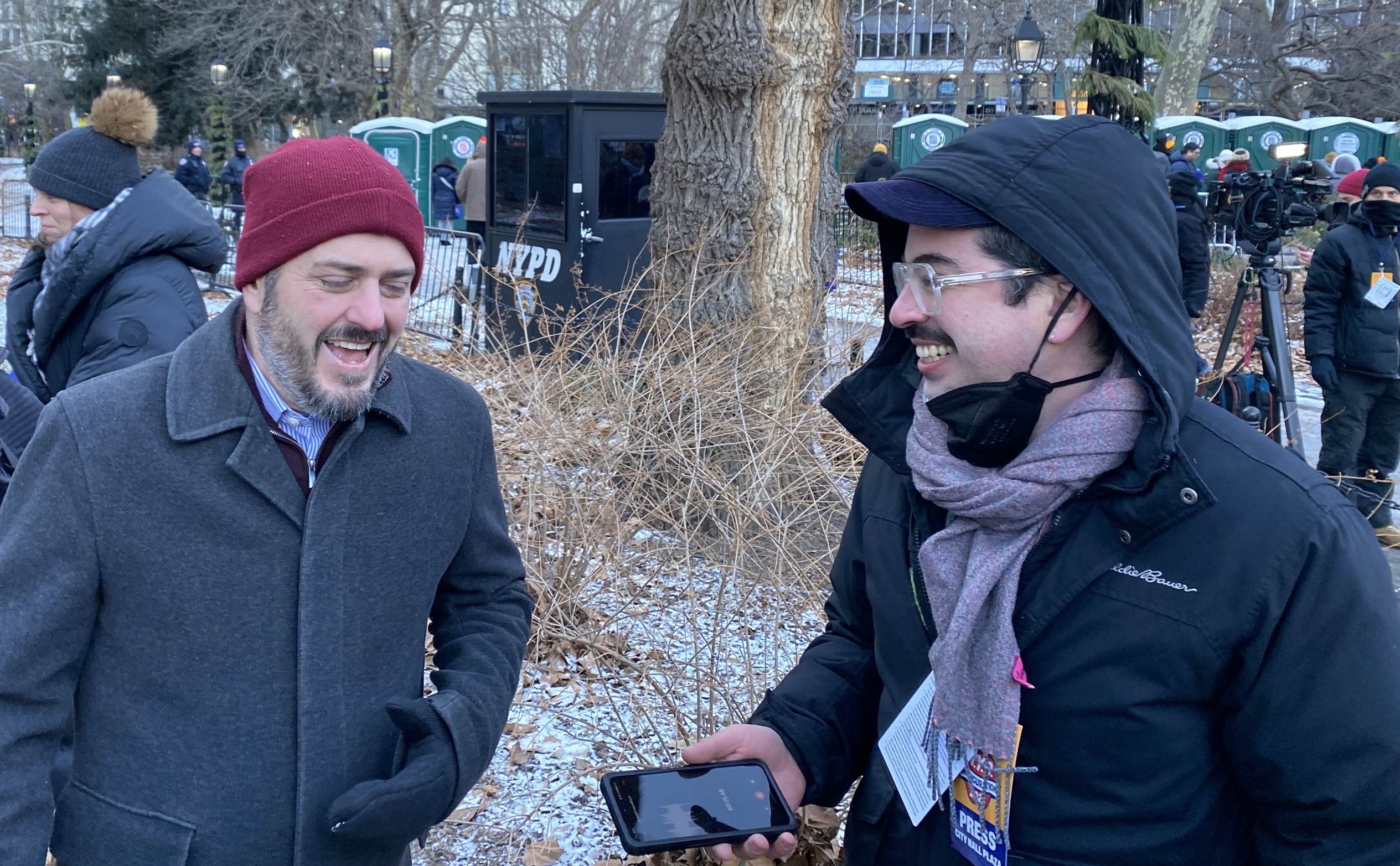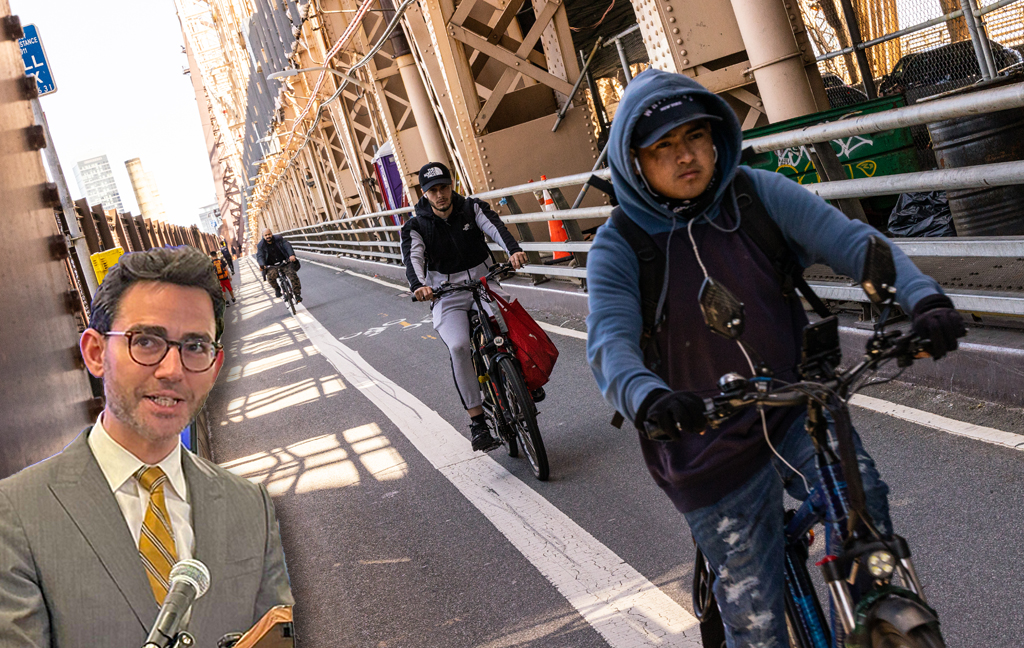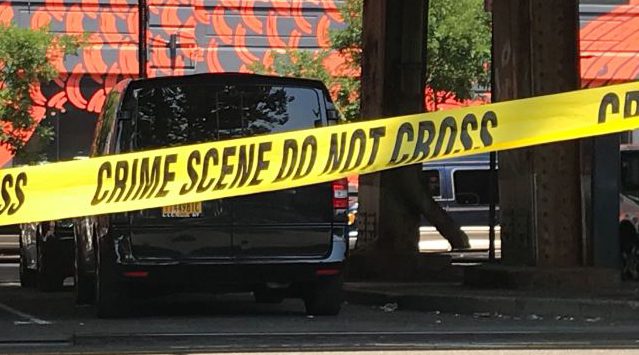Last week, West Village Democratic district leader Arthur Schwartz threatened to sue DOT into watering down its plan for a busway on the core blocks of 14th Street during the L train shutdown. A new analysis released by DOT and the MTA highlights what's at stake if Schwartz and his NIMBY cohort get their way: Everyone who needs to get across town in the vicinity of 14th Street would lose time, whether they're in a bus or a car [PDF].
The agencies' plan calls for converting 14th Street between Eighth and Third Avenues into a bus-only street while maintaining local access for deliveries, adding a two-way bike lane on 13th Street, and increasing pedestrian space to accommodate the thousands of people who'll be walking above ground instead of in subway stations.
The proposal's weakness is that it doesn't prioritize transit enough: Advocates warn that the busway should extend at least to Avenue A and that it should be in effect 24-7 to work effectively.
Schwartz and his contingent, meanwhile, are so selfishly obsessed with the potential traffic spillover on their residential streets that they deny the very need to keep tens of thousands of people moving without the L train.
The travel projections from the agencies lay out why the NIMBY position is untenable: Doing anything less than what DOT and the MTA have proposed will bog everyone down in traffic, and any traffic spillover would likely be even worse.
The MTA's ridership model estimates that 84,000 people will rely on the buses on 14th Street -- the 30,000 who already ride the M14 bus, plus 57 percent of intra-Manhattan L riders and 11 percent of riders coming from Brooklyn. That would make 14th Street the most intensely used bus route per mile in America, according to the agencies.
The 13th Street bike lane, meanwhile, is expected to absorb an increase of 5,000 daily crosstown bike trips, all in the space consumed by a single lane of motor vehicle parking.
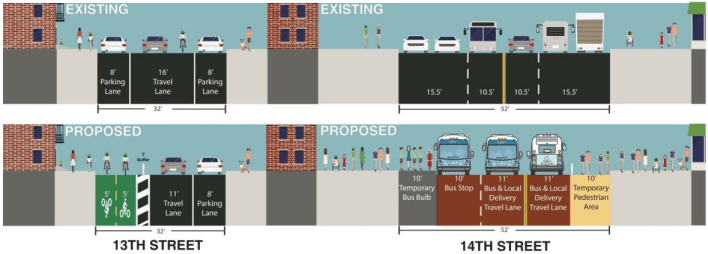
For their travel analysis, MTA and DOT considered four scenarios: doing nothing, implementing standard Select Bus Service on 14th Street, a "short busway" between Third and Sixth Avenues, and the city's preferred "full busway" option between Third and Eighth.
The SBS option, which maintains general traffic lanes on 14th Street, was ruled out because it precludes the addition of pedestrian space. There will be such an increase in foot traffic once 14th Street's only crosstown transit is running on the surface that DOT considers the sidewalk extensions to be an essential part of the plan.
In its models of the three remaining options, DOT found the full busway would reduce "person delay" -- a measure of travel efficiency for everyone in a bus, car, or van -- on 14th Street and surrounding streets by 51 percent compared to the "do nothing" scenario (top chart). Even looking only at the delay for car occupants, the full busway is preferable since it draws more people to the bus and reduces street-clogging car trips.
Here's what the model shows for bus travel times on 14th Street between Avenue C and Eighth Avenue:
In terms of traffic, the forecast says DOT's preferred busway will cause somewhat more spillover than doing nothing. But the agencies did not model the traffic impacts of bus riders abandoning slow transit and opting for Uber instead. They do note that if just 5 percent of bus riders get frustrated and opt for taxis, spillover traffic during the "Do Nothing" scenario would be greater than with the busway.
Notably, the "short busway" is projected to cause worse spillover on side streets than other options, since large numbers of drivers would accumulate on 14th Street, then make a series of turning movements to get across town in a snake of gridlock.
Advocates made a similar argument in pressing for the busway to extend east at least to Avenue A -- the longer busway speeds up buses and helps disperse crosstown car traffic. DOT and the MTA did not release an analysis for a longer busway, however.
The report doesn't clarify what hours bus priority rules will be in effect, but it does include a chart of Williamsburg Bridge travel speeds that indicates why it's important to set aside space for buses beyond rush hour. Traffic congestion slows vehicles on the bridge all day long, from 6 a.m. to 7 p.m. Bus priority rules should be in effect at least for those times, and once you have a bus lane in effect for 13 hours, you might as well keep the rules in place overnight too.
